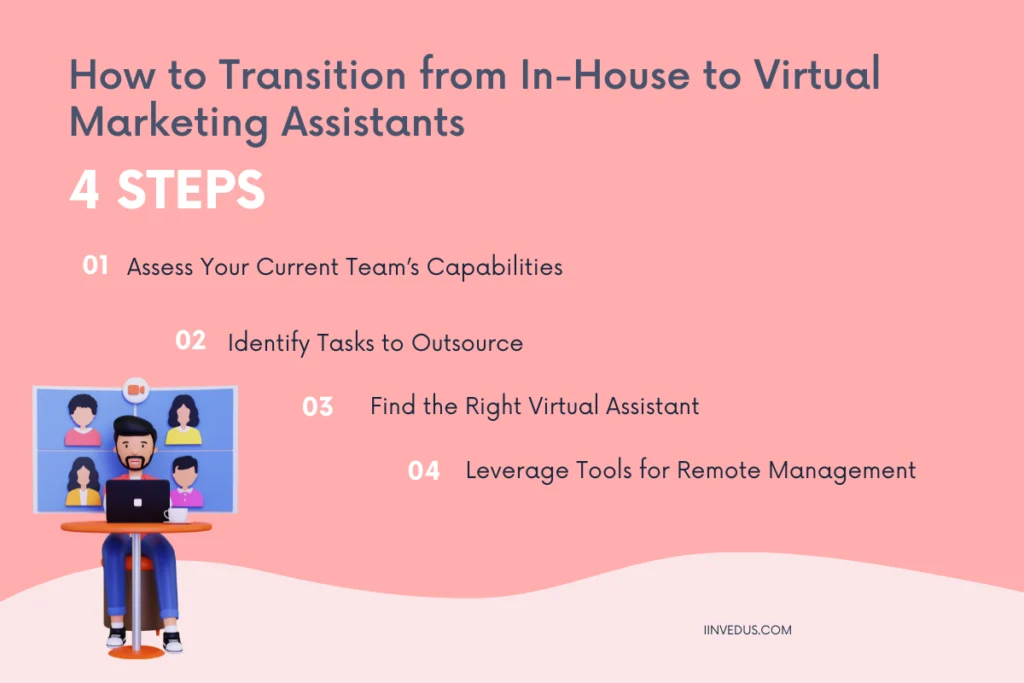Marketing is the backbone of any successful business. It drives visibility, attracts customers, and ultimately fuels growth. But when it comes to building a marketing team, business owners often face a dilemma: should they hire an in-house marketing assistant or opt for a virtual marketing assistant?
This choice isn’t just about cost; it’s about strategy, scalability, and aligning your resources with your long-term business goals. In this article, we’ll dive deep into the pros and cons of both options, providing you with the insights you need to make an informed decision for your business growth.
In-House Marketing Assistants: Advantages and Challenges
An in-house marketing assistant can be a fantastic addition to your team, especially if you value face-to-face collaboration. But let’s weigh the benefits against the potential drawbacks.
Advantages of In-House Marketing Assistants
- Physical Presence for Immediate Collaboration: Nothing beats the ease of walking into someone’s office for a quick brainstorming session or project update. This immediate access fosters teamwork and faster decision-making.
- Familiarity with Company Culture: An in-house team member becomes deeply ingrained in your company’s values and branding, making it easier to craft marketing campaigns that feel authentic.
- Full-Time Commitment to Your Brand: With their sole focus on your business, in-house assistants often provide a level of dedication that’s hard to replicate.
Challenges of In-House Marketing Assistants
- Higher Costs: Hiring an in-house assistant means paying salaries, benefits, office space, and sometimes even training expenses. These costs can add up, especially for small businesses.
- Limited Skill Set or Scalability: Marketing is a broad field, and one person may not have expertise in every area. Plus, expanding your team requires significant investment and onboarding time.
- Retention Issues: The marketing industry is competitive, and retaining talented individuals long-term can be a challenge, especially for startups.
If you’re a cost-conscious business owner or part of a small-to-medium enterprise (SME), these challenges might make you rethink whether an in-house hire is the best investment for your ROI.
In-House vs. Virtual: A Side-by-Side Comparison
Let’s break it down further with a clear, side-by-side comparison of the key factors to consider:
| Factor | In-House Marketing Assistant | Virtual Marketing Assistant |
|---|---|---|
| Cost | High (salary, benefits, workspace) | Budget-friendly (pay per project or hourly) |
| Skills | Limited (one person’s expertise) | Wide-ranging (access to global talent) |
| Scalability | Fixed team size | Flexible hiring based on need |
| Collaboration | Immediate, face-to-face | Tech-enabled via tools like Zoom/Slack |
| Availability | Full-time but location-bound | Flexible across time zones |
This comparison shows that while in-house assistants excel in real-time collaboration and cultural alignment, virtual assistants bring cost efficiency, flexibility, and access to diverse skill sets to the table.
“Outsourcing isn’t about reducing costs; it’s about maximizing opportunities.”
Here you can explore more about Marketing virtual assistant tasks, responsibilities. and benefits of hire one.
How to Transition from In-House to Virtual Marketing Assistants

Thinking about making the switch? Transitioning to virtual marketing assistants doesn’t have to be daunting. Follow these steps to ensure a seamless process:
#Step 1: Assess Your Current Team’s Capabilities
Take stock of your in-house team’s strengths and weaknesses. Are there tasks they struggle with or areas where you lack expertise? Understanding this will help you identify tasks that can be outsourced.
Step 2: Identify Tasks to Outsource
Not all tasks are created equal. Virtual assistants are ideal for:
- Social media management.
- Content creation and copywriting.
- Market research.
- Lead Generation
- Email marketing campaigns.
Delegate repetitive or specialized tasks to free up your in-house team for strategic planning.
#Step 3: Find the Right Virtual Assistant
Look for professionals who align with your business needs. Platforms like Upwork, Fiverr, and virtual assistant agencies offer a pool of skilled talent. When hiring, focus on:
- Their portfolio and reviews.
- Communication skills.
- Availability and time zone compatibility.
#Step 4: Leverage Tools for Remote Management
Managing a remote team is easier than ever with modern technology. Agile Tools like Slack, Asana, Trello, and Zoom streamline communication and task management. Establish clear expectations, set deadlines, and maintain regular check-ins to ensure productivity.
Conclusion
When it comes to marketing, there’s no one-size-fits-all solution. In-house marketing assistants offer immediacy and cultural alignment, while virtual marketing assistants provide flexibility, cost-efficiency, and access to a broader talent pool.
The choice ultimately depends on your specific business needs, budget, and long-term goals. For many businesses, a hybrid approach; combining the strengths of both in-house and virtual assistants—might be the ideal solution.

Ready to transform your marketing strategy? Explore virtual assistant options today and take the first step toward scalable, cost-effective marketing success!







